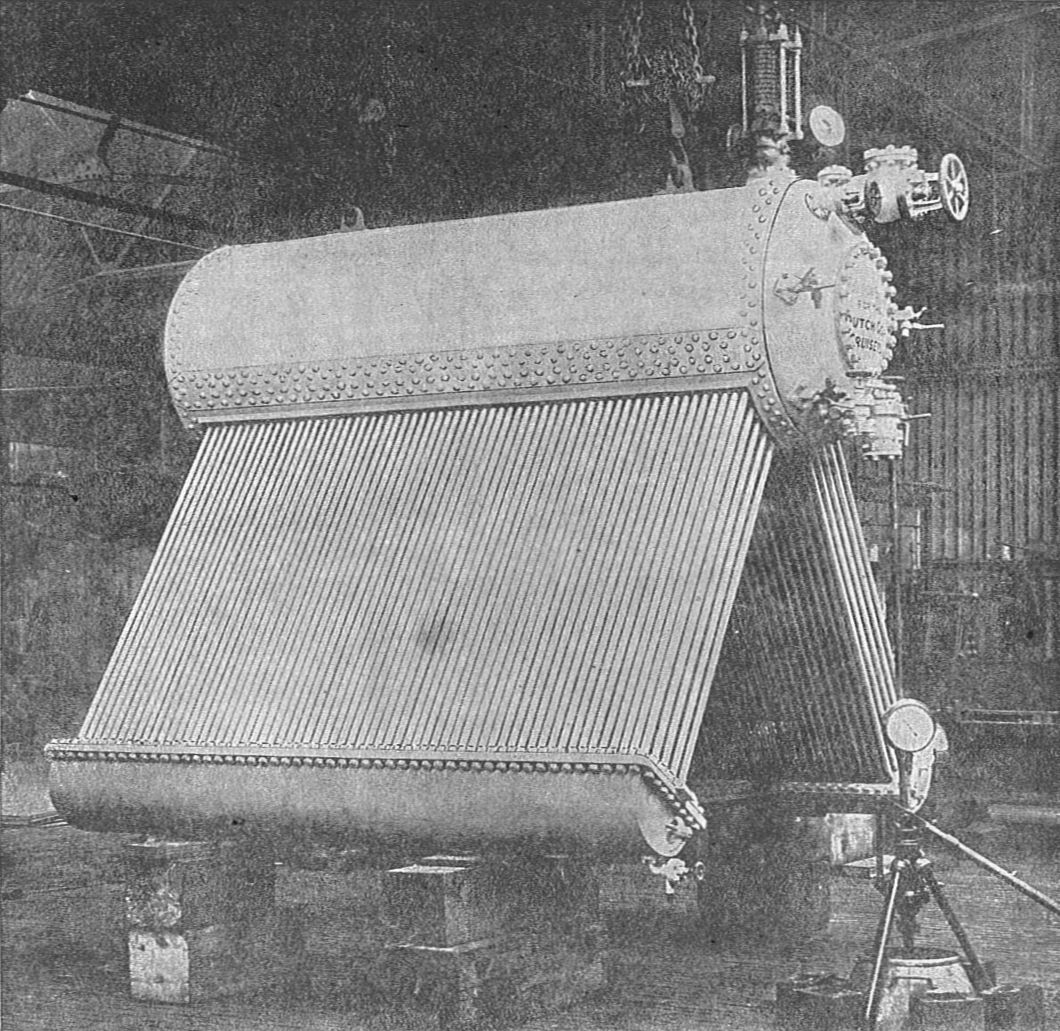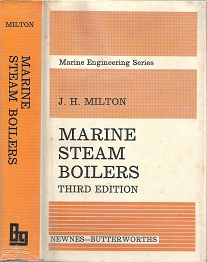- J.h Hgpldv
- J&h Electronics
- J&h Dinettes & Upholstery Freehold Nj
- Marine Steam Boilers J H Milton Pdf Free Download
- J&h Photo
- J&h Oil Grand Rapids Mi
Marine Steam Boilers J H Milton Pdf To Excel. Marine Steam Boilers - Milton Marine Steam Engines and Turbines. Create a free website.
Catalogue Persistent Identifier
APA Citation
Milton, J. H. (1953). Marine steam boilers. London : Newnes
MLA Citation
Milton, J. H. Marine steam boilers / by J.H. Milton Newnes London 1953
Australian/Harvard Citation
Milton, J. H. 1953, Marine steam boilers / by J.H. Milton Newnes London
Wikipedia Citation
| Bib ID | 799133 | |
|---|---|---|
| Format | Book, Online - Google Books | |
| Author |
| |
| Description | London : Newnes, 1953 256 p. : ill. ; 22 cm. | |
| Series | Marine engineering series. Visual basic express free. | |
| Notes | Includes index. | |
| Subjects | Steam-boilers, Marine. |
In the Library
Request this item to view in the Library's reading rooms using your library card. To learn more about how to request items watch this short online video .
Order a copy
| Copyright or permission restrictions may apply. We will contact you if necessary. |
| To learn more about Copies Direct watch this short online video . |
A 'Scotch' marine boiler (or simply Scotch boiler) is a design of steam boiler best known for its use on ships. Nsw foundation handwriting free.
The general layout is that of a squat horizontal cylinder. One or more large cylindrical furnaces are in the lower part of the boiler shell. Above this are many small-diameter fire-tubes. Gases and smoke from the furnace pass to the back of the boiler, then return through the small tubes and up and out of the chimney. The ends of these multiple tubes are capped by a smokebox, outside the boiler shell.[1]
The Scotch boiler is a fire-tube boiler, in that hot flue gases pass through tubes set within a tank of water. As such, it is a descendant of the earlier Lancashire boiler, and like the Lancashire it uses multiple separate furnaces to give greater heating area for a given furnace capacity. It differs from the Lancashire in two aspects: many small-diameter tubes (typically 3 or 4 inches (76 or 102 mm) diameter each) are used to increase the ratio of heating area to cross-section. Secondly, the overall length of the boiler is halved by folding the gas path back on itself.
- 3Variants
- 4Use in ships
Combustion chamber[edit]
The far end of the furnace is an enclosed box called the combustion chamber which extends upwards to link up with the firetubes.
The front wall of the combustion chamber is supported against steam pressure by the tubes themselves. The rear face is stayed by rod stays through the rear shell of the boiler. Above the combustion chamber and tubes is an open steam collecting space. Larger long rod stays run the length of the boiler through this space, supporting the ends of the boiler shell.
With multiple furnaces, there is a separate combustion chamber for each furnace. A few small boilers did connect them into one chamber, but this design is weaker. A more serious problem is the risk of reversing the draught, where exhaust from one furnace could blow back and out of the adjacent one, injuring the stokers working in front of it.
Showcenter 200 firmware download. Start your next project now with powerful and precise tools in a customizable workspace. Pinnacle Studio makes it easy to create movies, manage your media and edit video like a pro on multiple tracks. Which version of Pinnacle Studio is best for me? Whether you're new to video editing or an experienced editor, there is a Pinnacle Studio that’s right for you.
Origins[edit]
J.h Hgpldv

The first recorded boiler of comparable form was used in a railway locomotive, Hackworth's 'Wilberforce' class of 1830.[2] This had a long cylindrical boiler shell similar to his earlier return-flued 'Royal George' , but with the return flue replaced by a number of small firetubes, as had been demonstrated so effectively by Stephenson with his 'Rocket' a year earlier. The novel feature of an entirely internal combustion chamber was used. Unlike the later Scotch boiler though, this was self-supported by its own stays, rather than using stays through the walls of the boiler shell. This allowed the entire assembly of outer tubeplate, furnace tube, combustion chamber and firetubes to all be removed from the boiler shell as one unit, simplifying manufacture and maintenance. Although a valuable feature, this became impractical for larger diameter chambers that would require the support of the shell.
Variants[edit]
Number of furnaces[edit]
Typical practice for ships was to have two furnaces in each boiler. Smaller boilers might only have one, larger boilers commonly had three. The limitation in boiler size was the amount of work each stoker could do, firing one furnace per man.[1] Larger ships (meaning anything above the smallest) would have many boilers.
As with the Lancashire boiler, the furnace was often corrugated for strength. Various makers had their own particular ways of making these corrugations, leading to their classification for maintenance purposes under the broad titles of, Leeds, Morrison, Fox, Purves or Brown.[3]
Wet back and dry back[edit]
J&h Electronics
The typical design is the 'wet back', where the rear face of the combustion chamber is water-jacketed as a heating surface.
►►►►Contact Me:◄◄◄◄ ● Kik Messenger: Valle.Balle ● Skype: Akam-swe ● Modded PSN: DayZoonHD ● Instagram: akamhamak ● Snapchat: AkamH03 ● Steam #1: ( I play: Black Ops 2 ) ● Steam #2: ( I play: CSGO, Bo1, GTA 5, MW2, CoD Infinite Warfare, H1Z1 & More! In this video I'll be showing you guys how to download Counter Strike Source for free easy and fast! Free counter strike no download. (It's 1 above the one i showed you). ) ● YouTube: DayZoonHD ( ) Steam: csgotag2 () _____________________________________________________ - Intro Song: Luv Luv Please Subscribe, Like & Comment! Sorry for that annoying text in the middle of the screen that says 'Tech Smith', something went wrong but anyways I hope you can still see the tutorial:) Download Link: *IMPORTANT!* On 03.15 I meant to say that you have to click on 'Activate Administrator' not 'One-Drive', so click on 'Use As Administrator' instead.
The 'dry back' variation has the rear of the combustion chamber as an open box, backed or surrounded only by a sheetmetal jacket.[4][5] This simplifies construction, but also loses much efficiency. It is only used for small boilers where capital cost outweighs fuel costs. Although the Scotch boiler is nowadays rarely the primary steam generator on a ship, small dry-back designs such as the Minipac[6] are still encountered, for supporting secondary demands whilst alongside in port with the main boilers cold.
One interesting variant of the dry-back design has been a patent for burning ash-prone fuels.[7] The rear of the combustion chamber is used as an access point for an ash separator, removing the ash before the small-diameter tubes.
Genarts Sapphire v9.0.2 for After Effects, AVID, OFX Win/MacOSX CLEAN Direct Download Genarts Sapphire v9.0.2 for After Effects, AVID, OFX (Win/MacOSX)| 1.58GB Sapphire increases your productivity and quality output, without compromising consistency or the caliber of a look. Genarts sapphire avid mac crack.
Double-ended[edit]

The double-ended design places two boilers back-to-back, removing the rear wall of the boiler shell. The combustion chambers and firetubes remain separate. This design saves some structural weight, but it also makes the boiler longer and more difficult to install into a ship. For this reason they were not commonly used, although back-to-back arrangements of multiple single-ended boilers were common.[4]
Inglis[edit]
J&h Dinettes & Upholstery Freehold Nj
The 'Inglis'[8] modification adds an extra combustion chamber where an additional single large flue returns from the rear to the front of the boiler. Flow through the multiple tubes is thus from front to back, and so the exhaust is at the rear. Multiple furnaces would share a single combustion chamber.[4]
The major advantage of the Inglis is the extra heating area it adds, for a comparable shell volume, of perhaps 20%.[9] Surprisingly this is not from the additional combustion chamber, but from lengthening the narrow firetubes. These can now run the full length of the boiler shell, rather than just the rather shorter distance from the inner combustion chamber to the front tubeplate. Despite this advantage, it is rarely used.
Use in ships[edit]
The Scotch marine boiler achieved near-universal use throughout the heyday of steam propulsion, particularly for the most highly developed piston engines such as the triple-expansion compounds. It lasted from the end of the low-pressure haystack boilers in the mid-19th century through to the early 20th century and the advent of steam turbines with high-pressure water-tube boilers such as the Yarrow.
Large or fast ships could require a great many boilers. The Titanic had 29 boilers: 24 double-ended and 5 smaller single-ended. The larger boilers were 15 feet 9 inches (4.80 m) diameter and 20 feet (6.1 m) long, the smaller were 11 feet 9 inches (3.58 m) in length. All had three corrugated Morrison furnaces of 3 feet 9 inches (1.14 m) diameter, 159 furnaces in total, and a working pressure of 215 pounds per square inch (1,480 kPa).[10]
Shipboard working examples[edit]
Numerous Scotch boilers are in use on ships as of 2011, and new boilers can be built to replace life-expired ones. Examples of preserved steam boats employing Scotch boilers include:
- Steam tug Mayflower, Bristol Industrial Museum
Marine Steam Boilers J H Milton Pdf Free Download
- Mayflower's boiler was recently removed for restoration and could easily be seen in close-up.[citation needed]
- Baltimore, of 1906, at the Baltimore Museum of Industry, is the oldest working steam tug in the US.[11]
- Steamship Shieldhall based in Southampton, UK, is fully operational and has two oil-fired Scotch boilers.[12]
- Steam-powered icebreaker Stettin, operating on two coal-fired boilers
- Steam-powered drifterLydia Eva, based in Lowestoft or Great Yarmouth, Fully operational coal-fired Scotch boiler.[13]
- The steam tug Kerne built 1913. Operated out of Liverpool by the Steam Tug Kerne Preservation Society. One coal-fired wet back Scotch marine boiler with two furnaces. Max working pressure 180 pounds per square inch (1,200 kPa).[14]
- The steam yacht Louise built 1902. Operating on Lake Geneva, Wisconsin by Gage Marine Corporation. One diesel-fired Scotch marine boiler powering a double-expansion steam engine, in excursion passenger service.[citation needed]
- The steam ship Trafik built 1892 in Stockholm Sweden by Bergsunds Mekaniska Verkstad as a passenger and freight ship on the Swedisk lake Vättern and with homeport Hjo. The machinery and its boiler are the original ones made for the ship in Stockholm.[15]
- The oil-burning steam tug Canning, built in 1954. First based in Liverpool, but worked at Swansea Docks from 1966 and now part of the National Waterfront Museum there.
References[edit]

| Wikimedia Commons has media related to Scotch marine boilers. |
J&h Photo
- ^ abStokers' Manual (1912 ed.). Admiralty, via HMSO, via Eyre & Spottiswoode. 1901.
- ^Snell, J.B. (1971). Railways: Mechanical Engineering. Longman. pp. 55–56. ISBN978-0582127937.
- ^Malek, Mohammad A. (2004). Power Boiler Design, Inspection, and Repair. McGraw Hill Professional. p. 261. ISBN978-0071432023.
- ^ abcK.N. Harris (1974). Model Boilers and Boilermaking. MAP. ISBN978-0852423776.
- ^Malek, Power Boilers, p.244
- ^Naval Marine Engineering Practice. vol 1. Royal Navy, via HMSO. 1971 [1959]. p. 11. ISBN978-0117702233.
- ^US 5558046 Fire-tube boiler, with ash removal
- ^'Business and History – John Inglis Co. Limited'. University of Western Ontario. Archived from the original on 2010-01-12.Cite uses deprecated parameter
|deadurl=(help) - ^Milton, J.H. (1961) [1953]. Marine Steam Boilers (2nd ed.). Newnes.
- ^McCluskie, Tom (1998). Anatomy of the Titanic. London: PRC. p. 65. ISBN978-1856484824.
- ^'Steam Tug Baltimore'.
- ^'SS Shieldhall'.
- ^'Lydia Eva'.
- ^'s/s KERNE'.
- ^'S/S Trafik Hjo'.